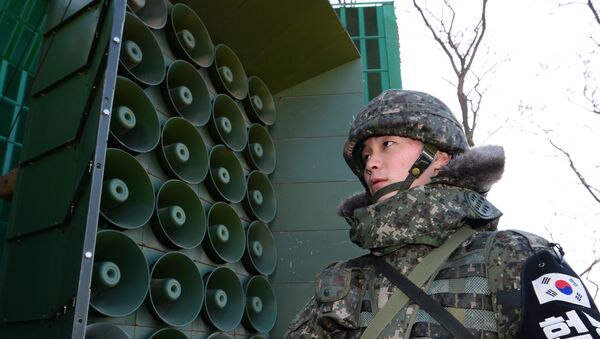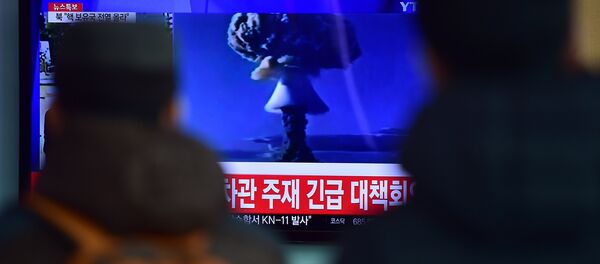"There is a possibility of a repeated escalation of tensions between the North and the South Koreas. Japan's Defense Ministry continues to carefully monitor the unfolding situation on the Korean peninsula," Nakatani told reporters.
On Friday, South Korea resumed operating its propaganda broadcasting loudspeakers situated near the Korean Demilitarized Zone and directed at the DPRK. Despite a mutual 2004 agreement to switch off propaganda loudspeakers, a mid-2015 restart of broadcasting by South Korea led to an escalation of hostilities between the two sides. In August 2015, the two countries exchanged artillery fire, while North Korea's leader Kim Jong Un declared a quasi-state of war. The situation was later de-escalated on conditions of halting propaganda broadcasts.
With a 24-kilometer (15-mile) range, South Korea's loudspeakers cover the DMZ as well as the DPRK's near-border civilian areas. South Korea's decision to resume propaganda came after the North's alleged January 5 hydrogen bomb test. While South Korean intelligence has expressed doubts over the test's authenticity, the incident provoked international condemnation and prompted the UN Security Council to discuss new anti-DPRK measures.
North Korea declared itself a nuclear power in 2005 and conducted nuclear tests in 2006, 2009 and 2013, having earlier withdrawn from the Nuclear Non-Proliferation Treaty.
The UN resolutions 1718 and 1814 urge Pyongyang to refrain from nuclear tests and reengage in talks on the denuclearization of the Korean peninsula.



